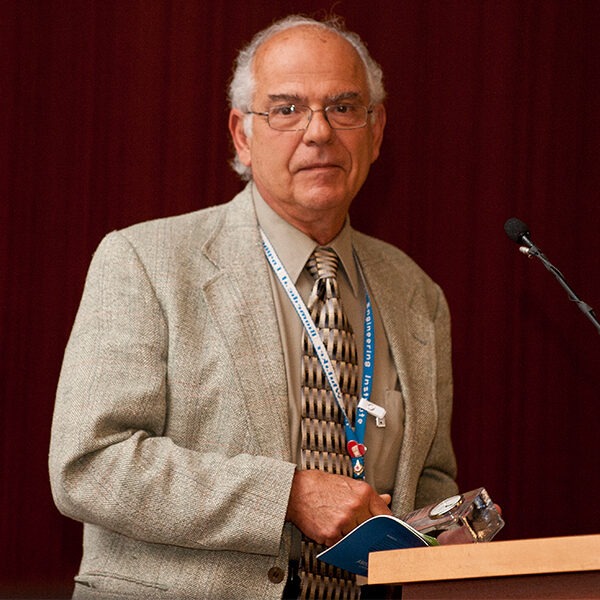Research Interests
Our proposed experiments will test our overall hypothesis that alterations in venous capacitance function by the carotid sinus baroreceptor reflex system is an important determinant of the cardiac output response seen in astronauts after returning to earth from long term exposure to micro gravity. This hypothesis is important to our overall understanding of circulatory adjustments made during long term space flight as well as to provide for counter measures to reduce the incidence of ortho static hypotension caused by an attenuation of cardiac output. We will use the tail suspended rat model to simulate the pathophysiological effects as they relate to cardiovascular deconditioning in microgravity. We will study the baroreceptor reflex control from the organism level to the level of venous micro vessels and the adrenergic receptors responsible for veno constriction. This proposal also advances a novel hypothesis: orthostatic intolerance following microgravity exposure is due in part to changes in function of intestinal (splanchnic) capacitance vessel alpha-1 adrenoreceptors (ARs). This hypothesis is based on: 1) our preliminary animal and human data which demonstrate that inhibition of a single alpha-1 AR subtype results in both blockade of sympathetically mediated splanchnic capacitance vessel constriction and orthostatic intolerance, and 2) published studies which document intact efferent sympathetic responses to postural stress (norepinephrine (NE) release) in returning astronauts, possibly pointing to a vascular smooth muscle insensitivity as contributing to orthostatic intolerance. This proposal will test the hypothesis that simulated microgravity produces alterations in alpha 1 AR-mediated control of splanchnic capacitance vessel tone.
An appropriate examination of the health risks associated with manned space flight necessitates an understanding of the molecular consequences of exposure to the radiations encountered in space. Human radio-epidemiologic data and animal studies indicate that irradiation of the heart can cause a spectrum of cardiovascular complications. The mechanisms suggested for these alterations are chronic inflammation induced by oxidative stress. Its well known that ionizing radiation (IR) produces biological damage by direct effect on DNA and indirectly by generation of reactive oxygen species (ROS) in the cellular milieu. The xanthine oxidoreductase (XOD) system is one of the major sources of free radicals in biologic systems. Since the XOD system is present primarily in the reduced XDH form in normal tissue, the production of free radicals is negligible. However, emerging data demonstrates that IR irreversibly converts the xanthine dehydrogenase (XDH) to xanthine oxidase (XO) leading to amplification and persistence of IR induced, ROS dependent cell damage. It is well known that ROS interferes with cellular signaling (nitrosylation and phosphorylation) and is pro-apoptotic (releases mitochondrial cytochrome-C and activates apoptotic pathways). One of the postulated mechanisms of radiation related tissue injury is endothelial cell damage. However little is known regarding other cellular and molecular targets in the pathophysiology of radiation induced cardiovascular system dysfunction. Furthermore little is known regarding the response of endothelial cells and cardiac myocytes to high LET radiation. In this proposal we intend to use established in vivo and in vitro bioassays to characterize the radiation response to charged particle exposure. Furthermore, mechanistically will focus on the interaction between ROS and nitric oxide (NO) pathways in the regulation of both myocardial and vascular structure and function following OS induced by high LET radiation. Our group have demonstrated the important reciprocal interaction between NO and O2- (derived from XO) in the regulation of myocardial contractility and endothelial function. We will utilize our expertise to determine the effect of radiation on these important signaling pathways in the cardiovascular system.
We hypothesize that charged particles will produce an acute oxidative stress event with cellular injury and possible death with early and late consequences that are dose, LET (linear energy transfer), and time-dependent. Endothelial and myocardial dysfunction represent integrated cumulative indicators of this cellular injury. We further hypothesize that radiation induced endothelial and myocardial contractile dysfunction results from the specific imbalance in NO signaling induced by increased ROS production. In addition, we hypothesize that the XO, NOS, arginase pathways play a critical role in the response to radiation induced OS.
A chronic rat model and in vivo and in vitro microvessel bioassay will be used to investigate effects of simulated microgravity on splanchnic vessel responses to adrenergic stimulation. These studies will provide important new data concerning normal capacitance vessel function in compensating for postural blood volume redistribution, test our novel hypothesis regarding the pathogenesis of orthostatic intolerance following microgravity exposure, and provide insights into potential countermeasures and therapies to prevent problematic postural hypotension on reentry.
Our laboratory currently performs experiments from chronic instrumented animals to the cellular and molecular mechanisms involved in cardiovascular regulation and control. It is fully equipped to independently perform all of the necessary experiments.
Education
- PhD, Case Western Reserve University, 1972
- BSAE, The Polytechnic Institute of Brooklyn, 1968

